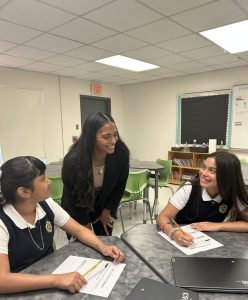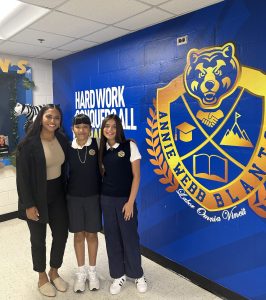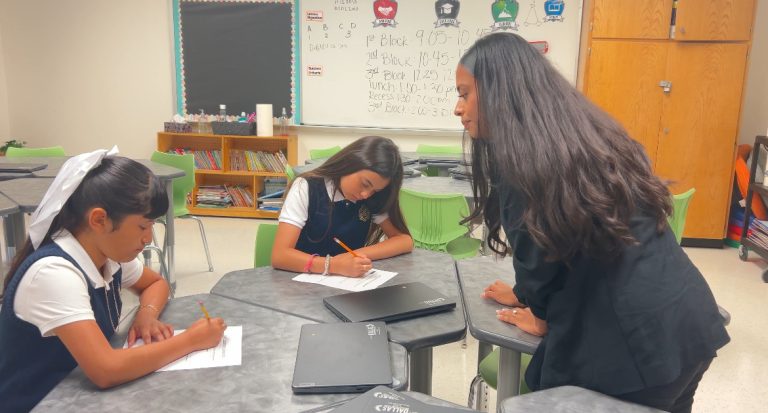Katherine Leiva remembers the first time she stepped into a U.S. classroom at age five.

After moving from El Salvador, she landed in Virginia, where she found herself surrounded by a language she didn’t understand. Every word feeling strange and unfamiliar.
“You just got thrown into English,” she said. “I had a big disconnection with my culture, Spanish at home, English everywhere else.”
Now, as a sixth-grade teacher at Annie Webb Blanton Elementary School, Leiva guides her students through the same challenges she once faced.
“It’s nice to be that person that they can talk to in whichever language they want because when I was younger, it was very much school and home; two separate entities,” Leiva said.
Ximena N. and Camila R. have been Leiva’s students for two years.
“I really love how she teaches and tries her best to help people understand, even if they don’t at first,” Camila said.
 Now sixth graders, they credit her bilingual skills and caring nature with making a big impact on their legacies.
Now sixth graders, they credit her bilingual skills and caring nature with making a big impact on their legacies.
“I love Ms. Leiva. She’s one of the greatest teachers I’ve had,” Ximena said.
During Leiva’s first year teaching fifth grade, 68 percent of her students passed STAAR. In the 2024-2025 school year, that number increased to 81 percent, with 54 percent of her students scoring at the Meets or Masters level. Districtwide, the 2024-2025 results revealed emergent bilingual students in Dallas ISD outperformed their state peers in the “all subjects and grades” category.
Leiva says mentorship played a major role in shaping her teaching approach and STAAR success. Since then, she’s developed a system that centers around consistency and goal-setting.
“Start with the finish line in mind,” she said. “I’ve taken the STAAR myself, so I know what it looks like. But more than anything, it’s about consistency. It doesn’t happen overnight.”
She gives the example of extended constructed responses, lengthy written answers on the STAAR test.
“It took months for my students to be able to write an essay. At first, I gave them support sheets with sentence starters. Slowly, I took those away until they could do it on their own.”
For teachers who don’t speak the native language of their students, Leiva encourages creating a welcoming environment.
“Emergent bilingual students sometimes feel shy or nervous to speak up,” she said. “Make sure they feel comfortable. They can communicate, they just need to feel safe doing it.”
Leiva is focused on building a legacy measured in rising achievement.
“I want to raise that number for how many students who meet and master,” she said. “I just want to see academic success with them, that’s what I’m excited for.”

